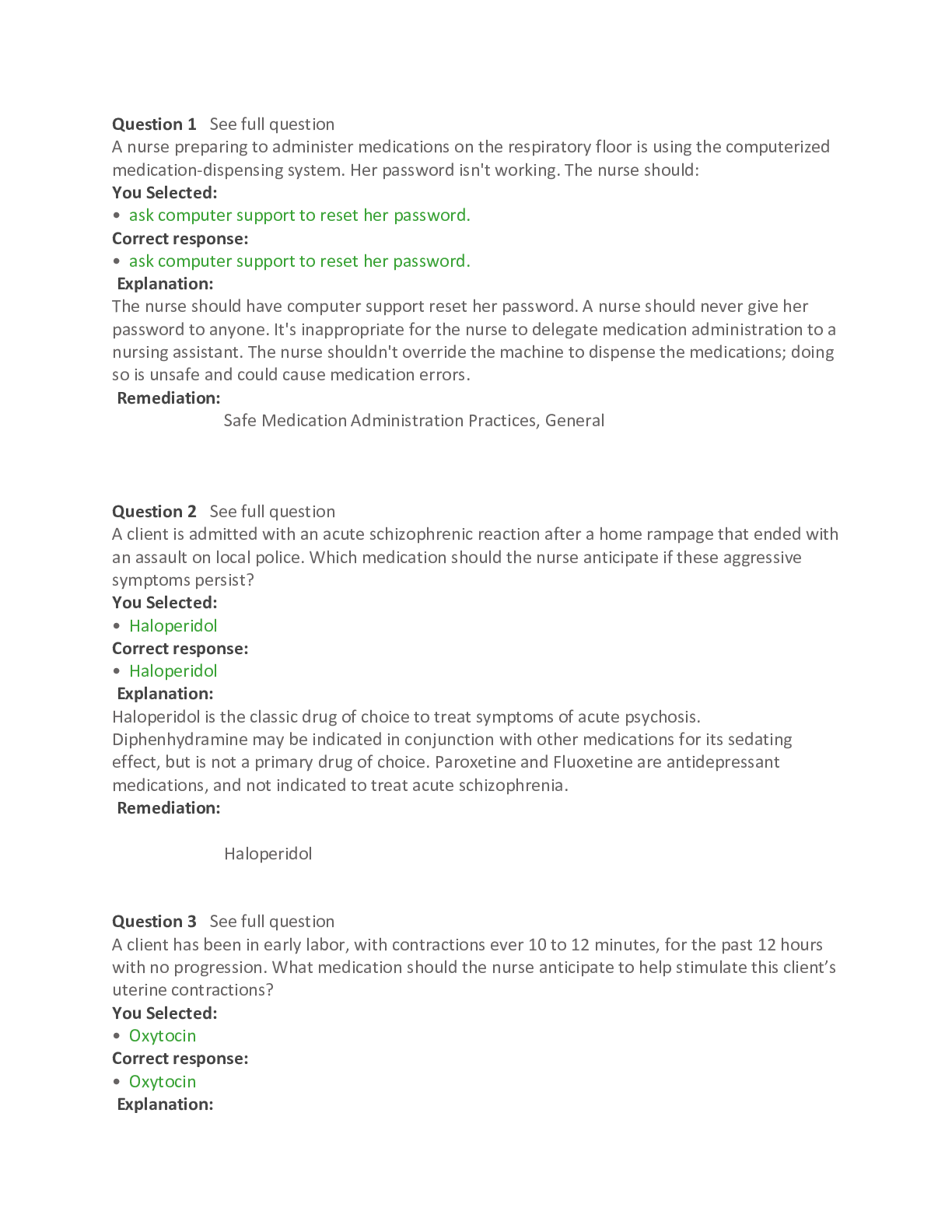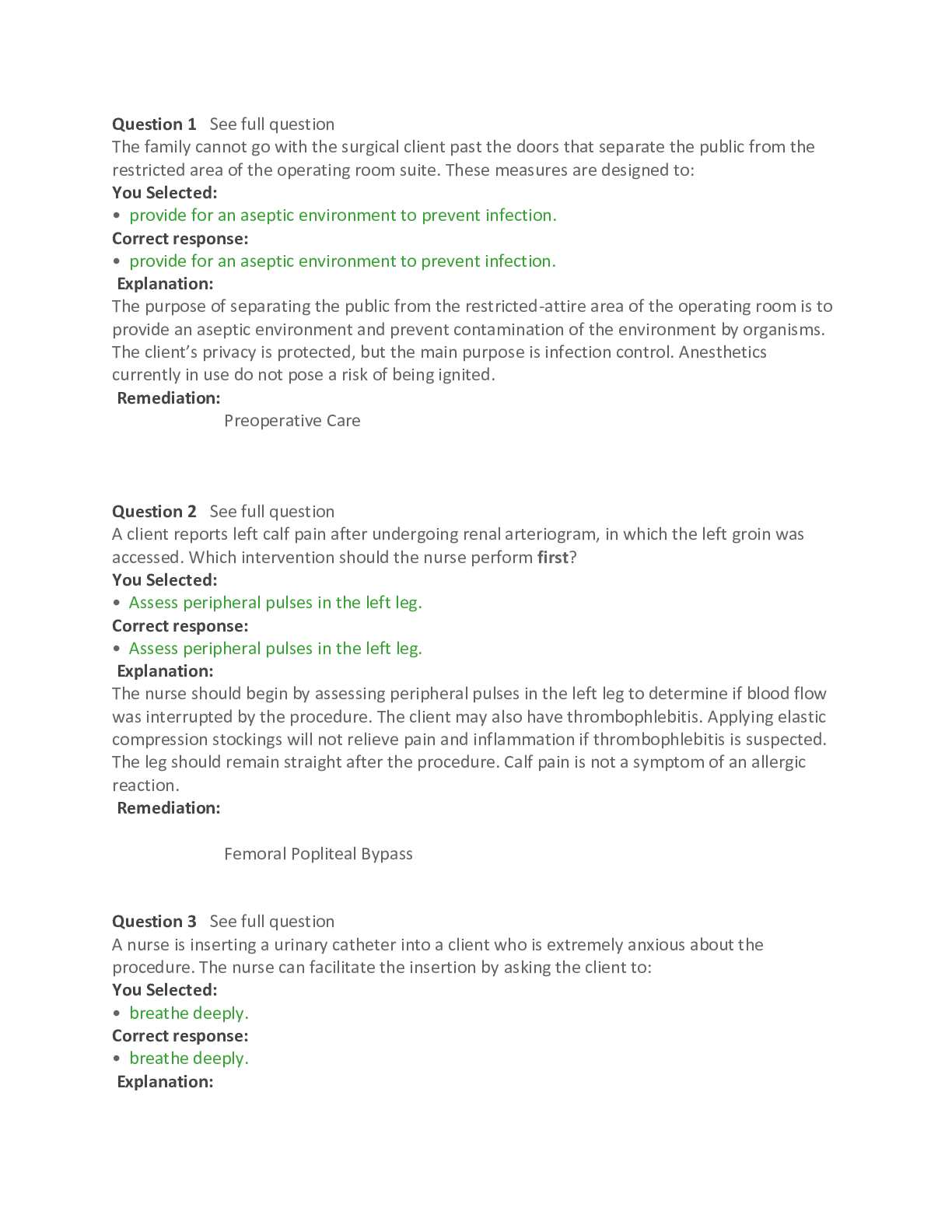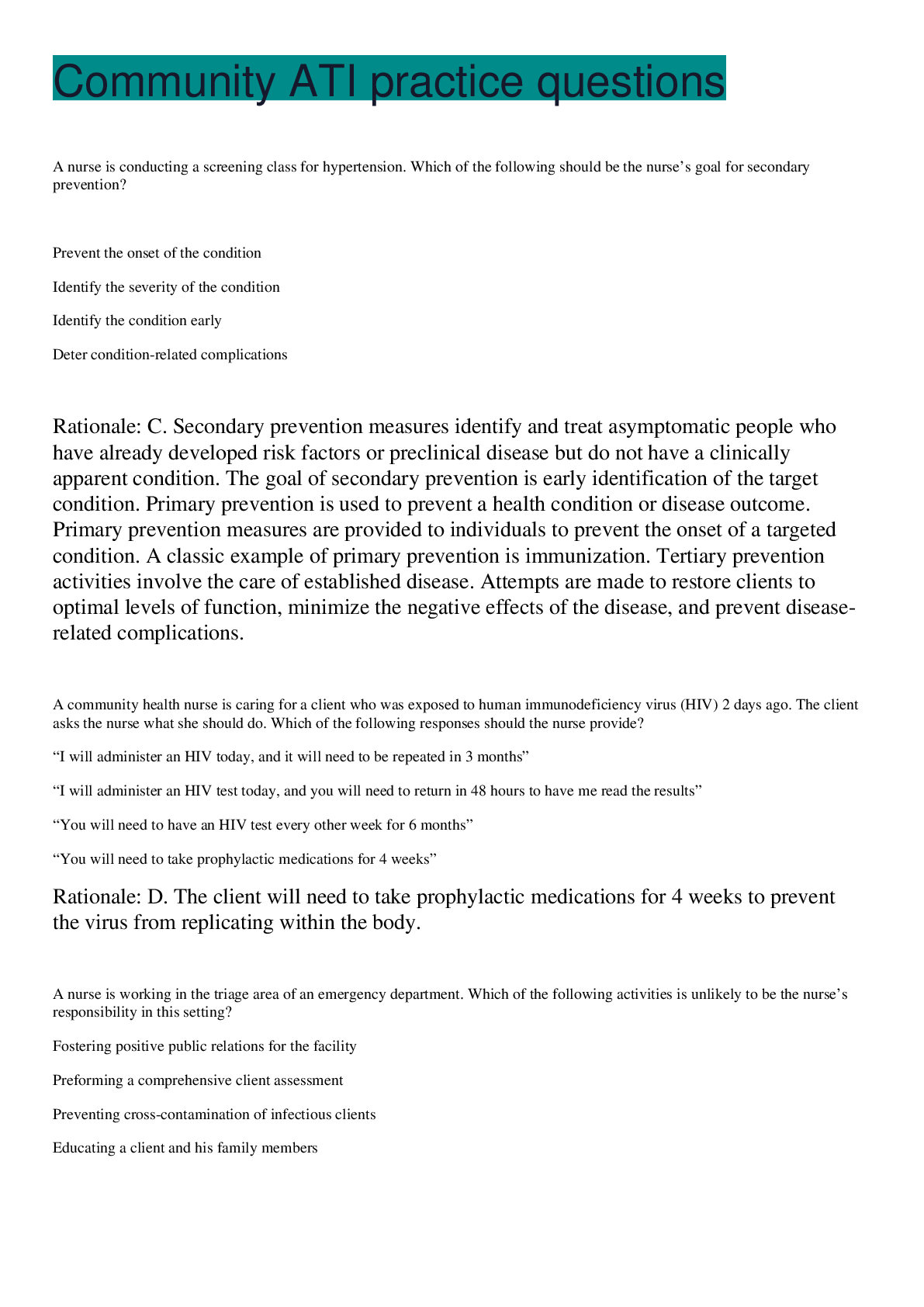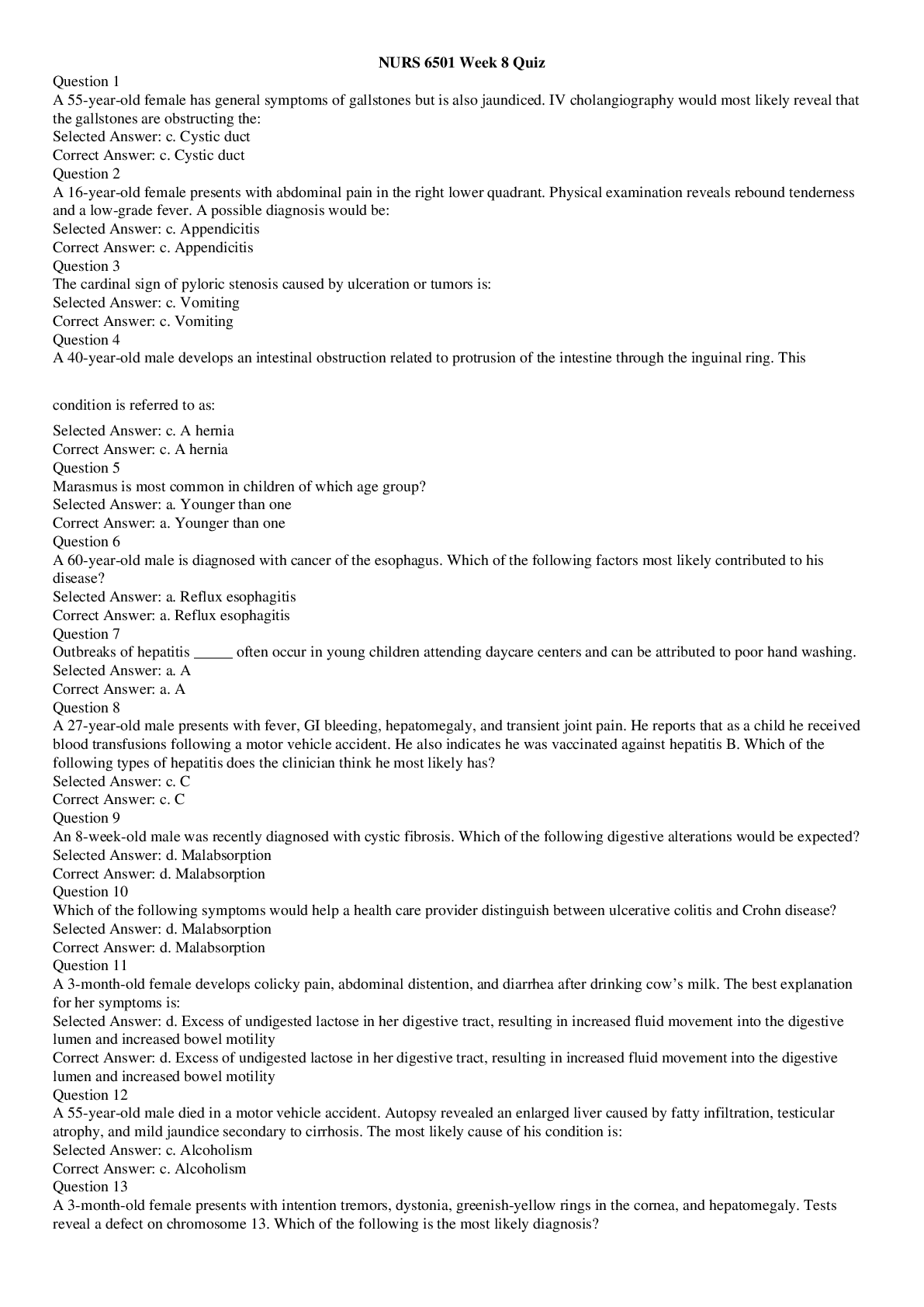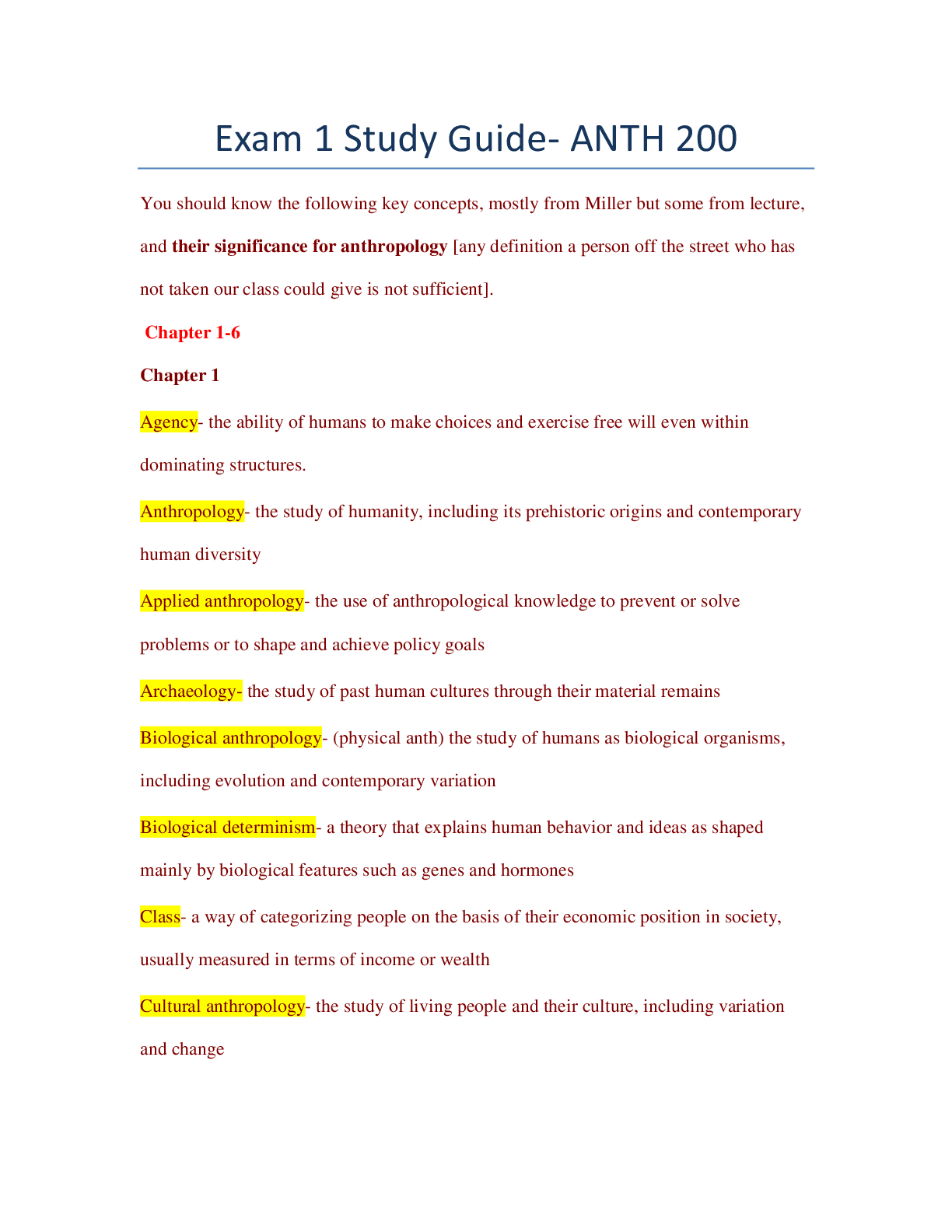*NURSING > STUDY GUIDE > South University - NSG 5003 Questions And Answers Study Guide. (All)
South University - NSG 5003 Questions And Answers Study Guide.
Document Content and Description Below
Chapter 14: Cancer in Children MULTIPLE CHOICE 1. What congenital malformation is commonly linked to acute leukemia in children? a. Down syndrome c. Retinoblastoma b. Wilms tumor d. Neuroblastoma ... ANS: A Trisomy 21 (Down syndrome) is the most common genetic defect linked to the development of acute leukemia. Children with Down syndrome have a 10- to 20-fold increased risk of developing acute lymphoblastic and myelogenous leukemia and a higher risk for developing acute megakaryocytic leukemia. No current research supports a link between the other stated congenital malformations and acute leukemia. PTS: 1 REF: Page 444 2. When are childhood cancers most often diagnosed? a. During infancy c. After diagnosis of a chronic illness b. At peak times of physical growth d. After an acute illness ANS: B Childhood cancers are most often diagnosed during peak times of physical growth. No current research supports the other options. PTS: 1 REF: Page 443 3. Prenatal exposure to diethylstilbestrol (DES) can result in which type of cancer? a. Breast cancer c. Vaginal cancer b. Leukemia d. Lymphoma ANS: C DES has been identified as a transplacental chemical carcinogen; a small percentage of the daughters of women who took DES during pregnancy developed adenocarcinomas of the vagina. No current research supports a link between the drug and other cancers. PTS: 1 REF: Page 445 4. Currently, what percentage of children with cancer can be cured? a. 40% c. 60% b. 50% d. 80% ANS: D Currently, more than 80% of children diagnosed with cancer are cured. PTS: 1 REF: Page 445 5. Most childhood cancers arise from the: a. Epithelium c. Embryologic ectodermal layer b. Mesodermal germ layer d. Viscera ANS: B Most childhood cancers originate from the mesodermal germ layer that gives rise to connective tissue, bone, cartilage, muscle, blood, blood vessels, gonads, kidney, and the lymphatic system. The other options are not common sites from which cancers originate. PTS: 1 REF: Page 443 6. Which form of cancer is linked to congenital malformation syndromes? a. Wilms tumor c. Osteosarcoma b. Retinoblastoma d. Rhabdomyosarcoma ANS: A Wilms tumors are linked with other genetically linked childhood cancers. It is the only form among the available options that is associated with congenital malformation syndromes. PTS: 1 REF: Page 443 | Table 14-1 7. Research data support a carcinogenic relationship in children resulting from exposure to which virus? a. Herpes simplex virus c. Varicella zoster virus b. Influenza d. Epstein-Barr virus ANS: D The strongest association between viruses and the development of cancer in children has been the Epstein-Barr virus (EBV), Burkitt lymphoma, nasopharyngeal carcinoma, and Hodgkin disease. No current research supports a link between the remaining options and childhood cancer. PTS: 1 REF: Page 445 8. A child diagnosed with acquired immunodeficiency syndrome (AIDS) has an increased risk of developing: a. Non-Hodgkin lymphoma c. Epstein-Barr b. Retinoblastoma d. Leukemia ANS: A Children with AIDS have an increased risk of developing non-Hodgkin lymphoma and Kaposi sarcoma. Leukemia is linked to retinoblastoma. Epstein-Barr has been linked to the development of some cancers, whereas no known link has been found between AIDS and the development of leukemia. PTS: 1 REF: Page 445 9. Which intervention has the greatest affect on a child’s mortality rate when diagnosed with cancer? a. Age at the time of diagnosis b. Participation in clinical trials c. Proximity to a major cancer treatment center d. Parental involvement in the treatment planning ANS: B Mortality rates have significantly declined in the past 40 years largely as a result of advances in treatment and participation in clinical trials. Although important, the other options are not believed to have an affect on the decline of the mortality rate of childhood cancer. PTS: 1 REF: Page 445 10. Which statement is likely true regarding children being treated for cancer with radiation therapy? a. They will most likely have a successful remission of tumor growth. b. They seldom require follow-up maintenance treatments. c. They are prone to experience severe developmental delays. d. They are at increased risk for developing adult cancers. ANS: D Although the need exists for long-term studies, research has shown a correlation between radiation-induced malignancies from radiotherapy (as in cancer treatment) or radiation exposure from diagnostic imaging; both have shown to increase the risk of developing cancer during adulthood. The other options are not necessarily true regarding the outcomes of radiation therapy for childhood cancers. PTS: 1 REF: Page 445 11. How should the nurse reply when a parent questions why a computed tomographic (CT) scan of the head was not ordered for their 5-year-old child after a minor fall? a. Physicians are cautious about ordering CT scan on children younger than 10 years of age. b. CT scans are seldom conclusive when used to diagnosis head injuries in young children. c. The child’s symptoms will determine whether a CT scan is necessary and worth the expense. d. Research suggests that repeated CT scans can increase the risk of developing brain cancer. ANS: D Findings from a recent study of 176,587 children suggest that those who have two or three CT scans of the head before the age of 22 years are three times more likely to develop brain cancer as those in the general population, and the risk of developing leukemia is three times as great in those who received five to ten CT scans. The other options do not represent the logic behind not ordering a CT scan in relationship to minor head trauma. PTS: 1 REF: Page 445 | What's New box MULTIPLE RESPONSE 12. Childhood exposure to which risk factors increases the susceptibility for developing cancers? (Select all that apply.) a. Low birth weight b. Chemotherapy c. Ionizing radiation d. Cigarette smoke e. Hodgkin disease ANS: B, C, E Childhood exposure to ionizing radiation, drugs, or existing cancer-causing viruses has been associated with the risk of developing cancer. Although unhealthy, no current research identifies cigarette smoke or low birth weight as risk factors for childhood cancer. PTS: 1 REF: Page 445 | Table 14-3 13. Which statement is true concerning the difference between adult and childhood cancers? (Select all that apply.) a. Numerous differences exist between these two categories of cancer. b. Childhood cancers are far less likely to be associated with genetic mutations. c. Environmental risks are strongly associated with childhood cancers. d. Exposure to pesticides is a minor risk for the development of adult cancers. e. Maternal exposure to carcinogenic substances presents little risk to the fetus. ANS: A, B Overall, cancers in children are very different than adult cancers and are associated with far fewer genetic mutations. Research does not support the other options. PTS: 1 REF: Page 442 | Page 444 | What's New box 14. Most childhood cancers originate from the mesodermal germ layer that ultimately produces which of the following? (Select all that apply.) a. Connective tissue b. Digestive system c. Muscles d. Kidneys e. Blood ANS: A, C, D, E Most childhood cancers originate from the mesodermal germ layer, which gives rise to connective tissue, bone cartilage, muscle, blood, blood vessels, gonads, kidney, and the lymphatic system. Cancers of the digestive tract do not originate in the mesodermal germ layer. PTS: 1 REF: Page 443 15. Which statements are true regarding cancers that develop in children? (Select all that apply.) a. Childhood cancers tend to be fast growing. b. Childhood cancers are diagnosed during growth spurts. c. Childhood cancer generally metastasizes by the time of diagnosis. d. Childhood cancer is typically at low risk for aggressive metastasis. e. Childhood cancers respond well to standardized treatment modalities. ANS: A, B, C Childhood cancers are most often diagnosed during peak times of physical growth. In general, they are extremely fast growing, with 80% having distant spread (metastases) at diagnosis. The other options are not true regarding childhood cancers. [Show More]
Last updated: 1 year ago
Preview 1 out of 346 pages
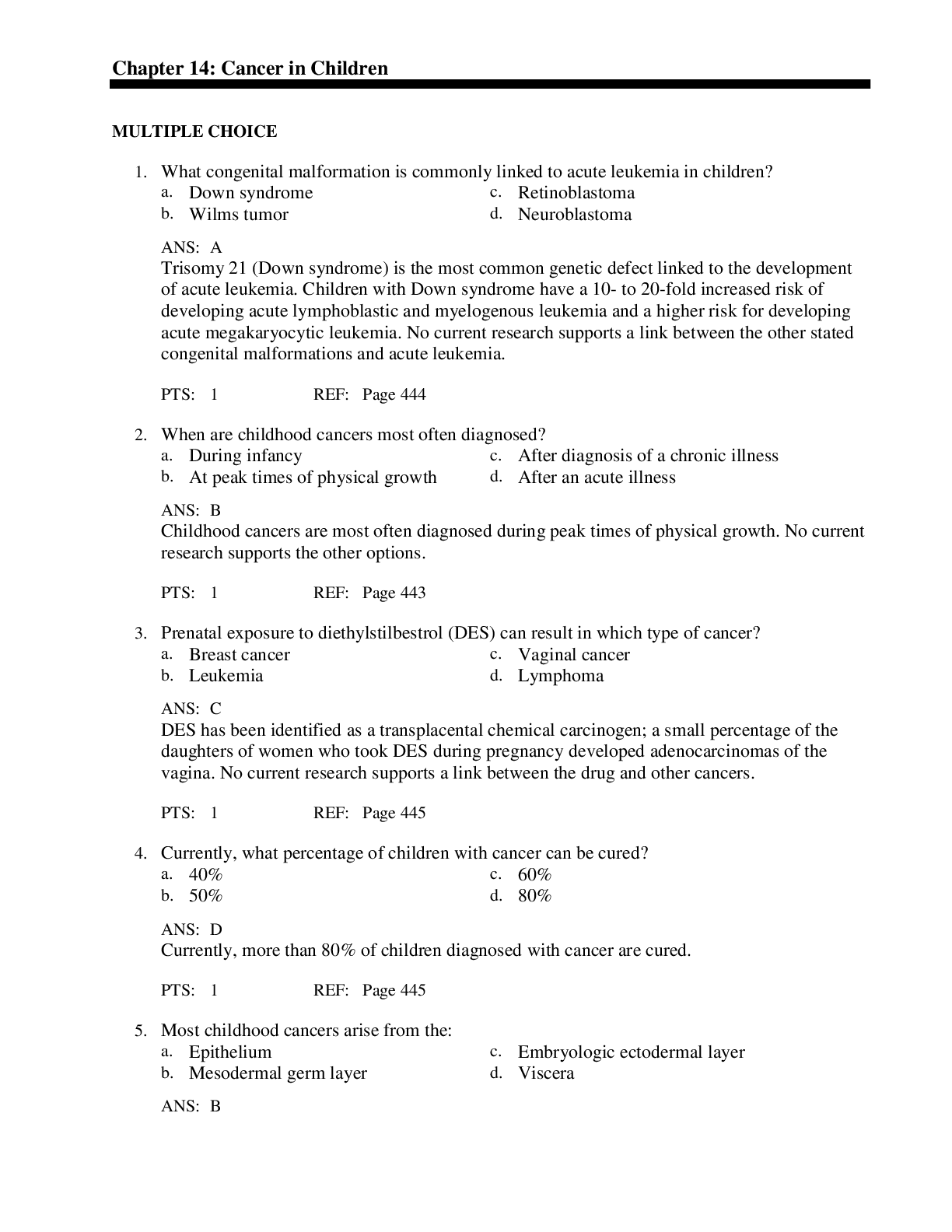
Reviews( 0 )
Document information
Connected school, study & course
About the document
Uploaded On
Nov 10, 2020
Number of pages
346
Written in
Additional information
This document has been written for:
Uploaded
Nov 10, 2020
Downloads
0
Views
95


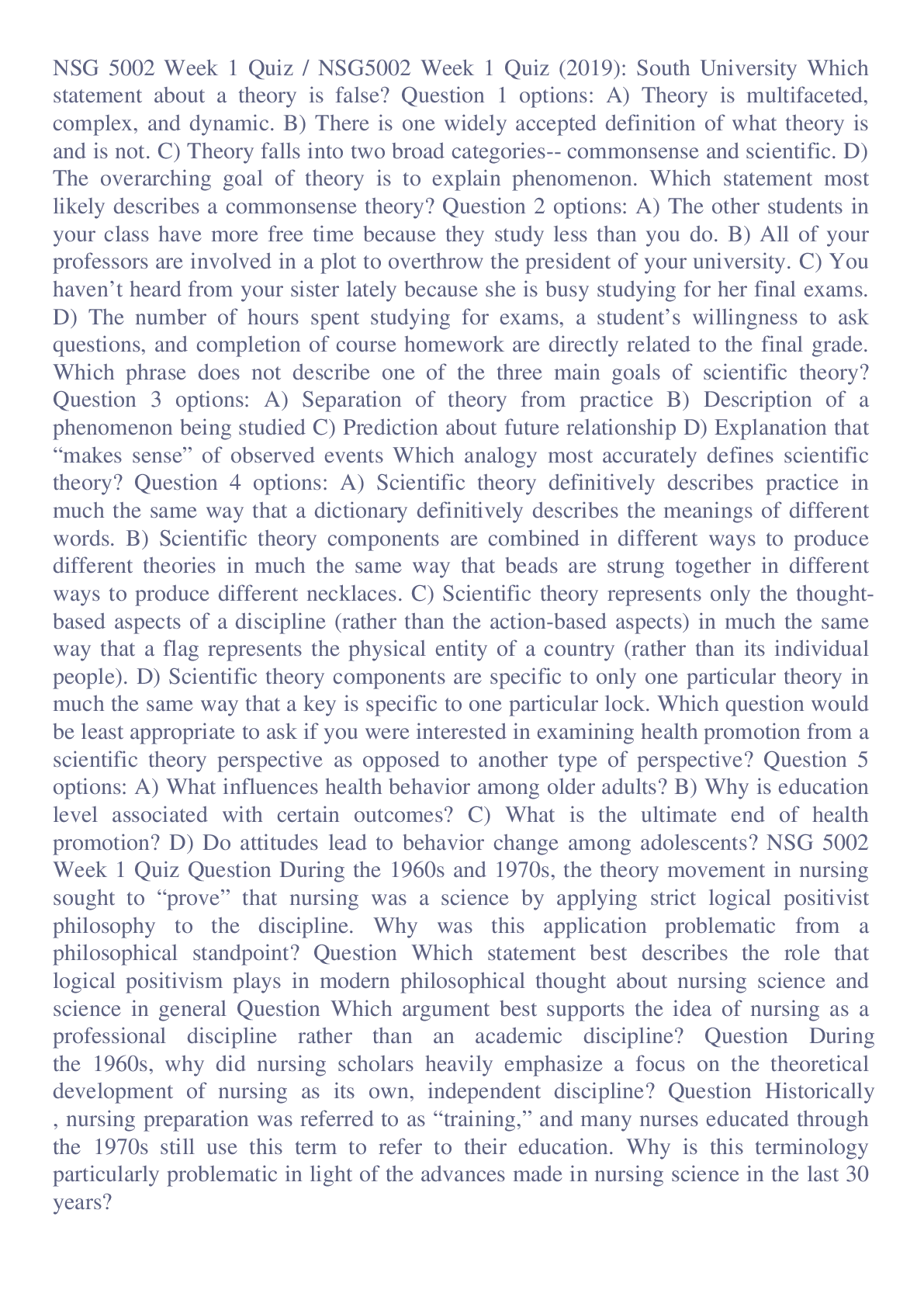


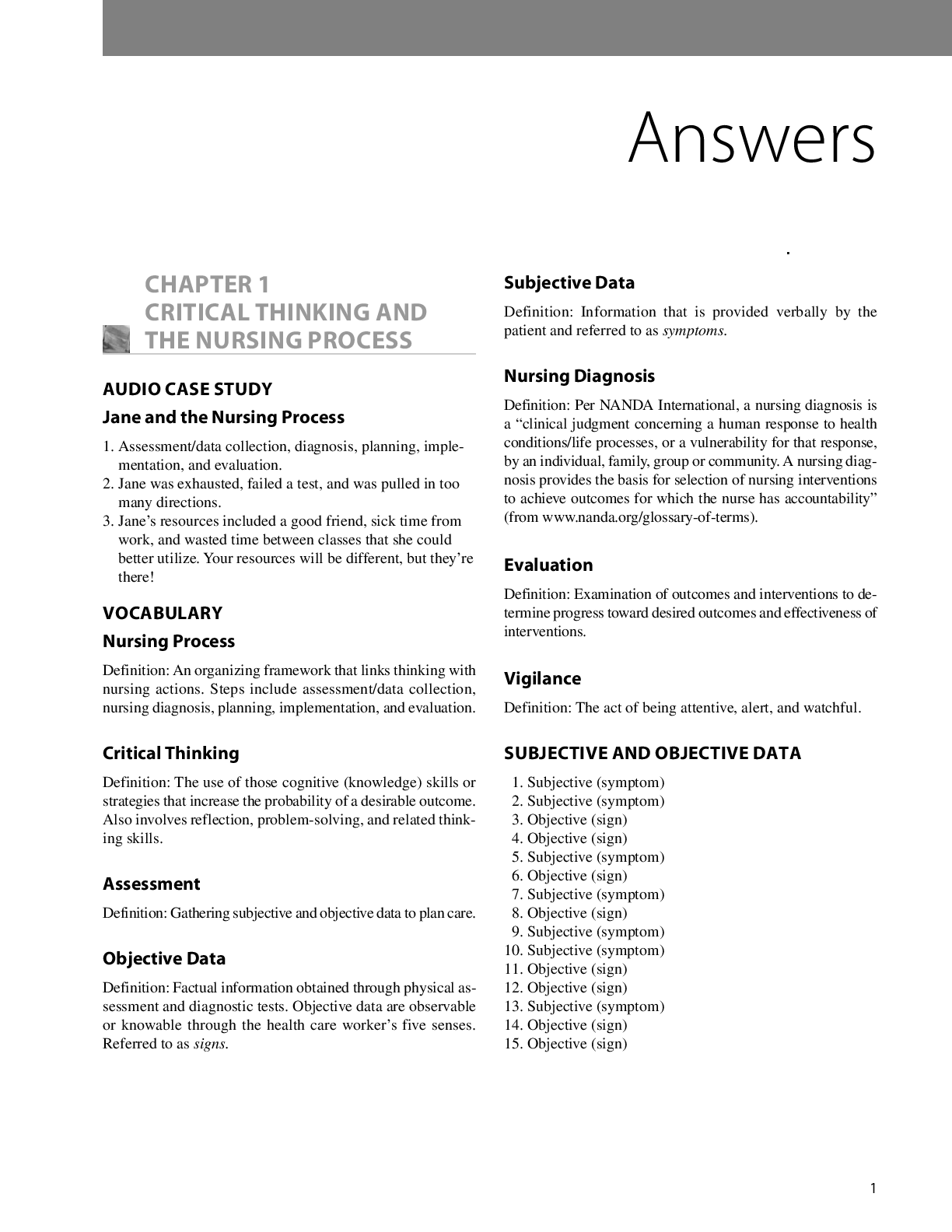


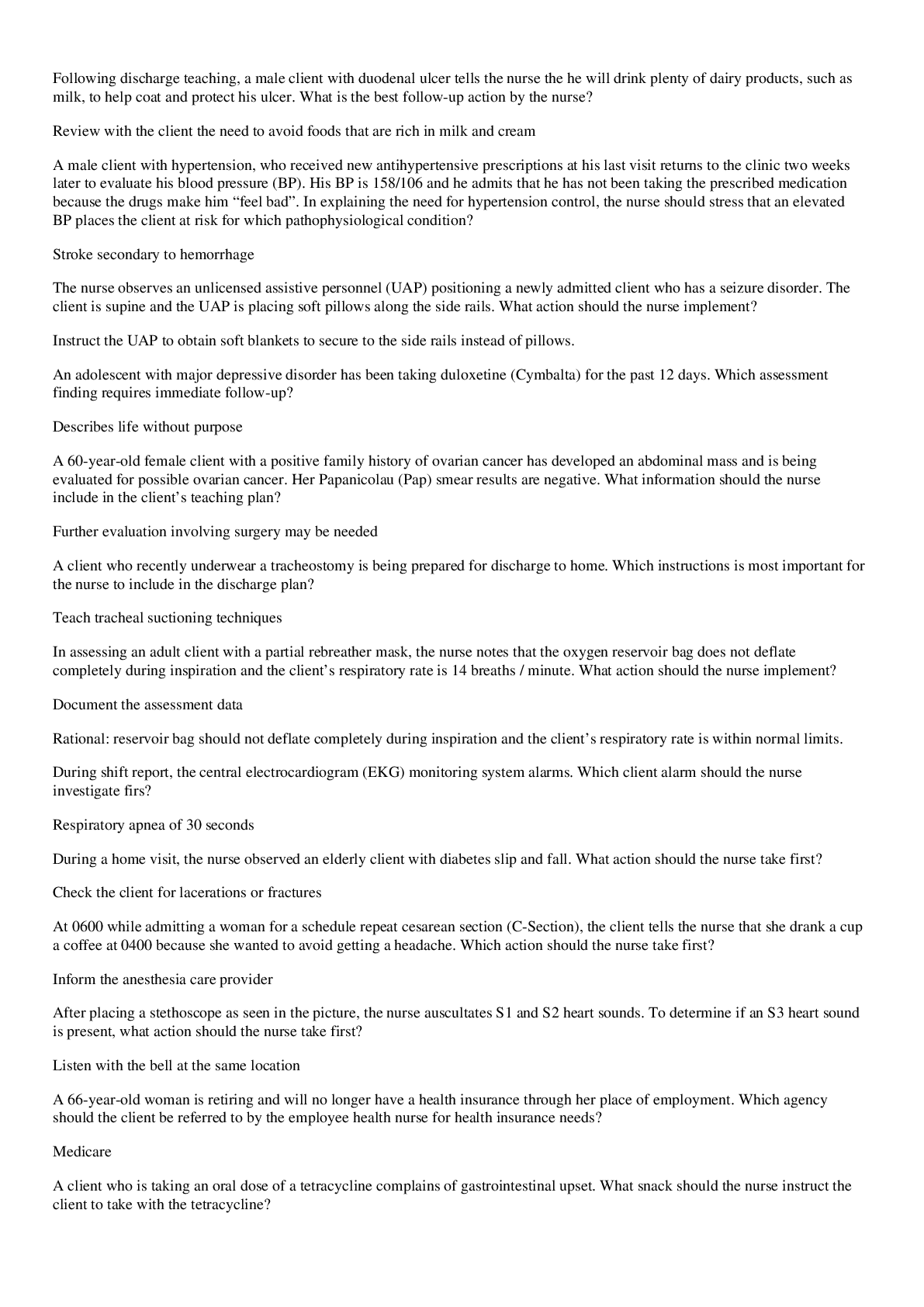
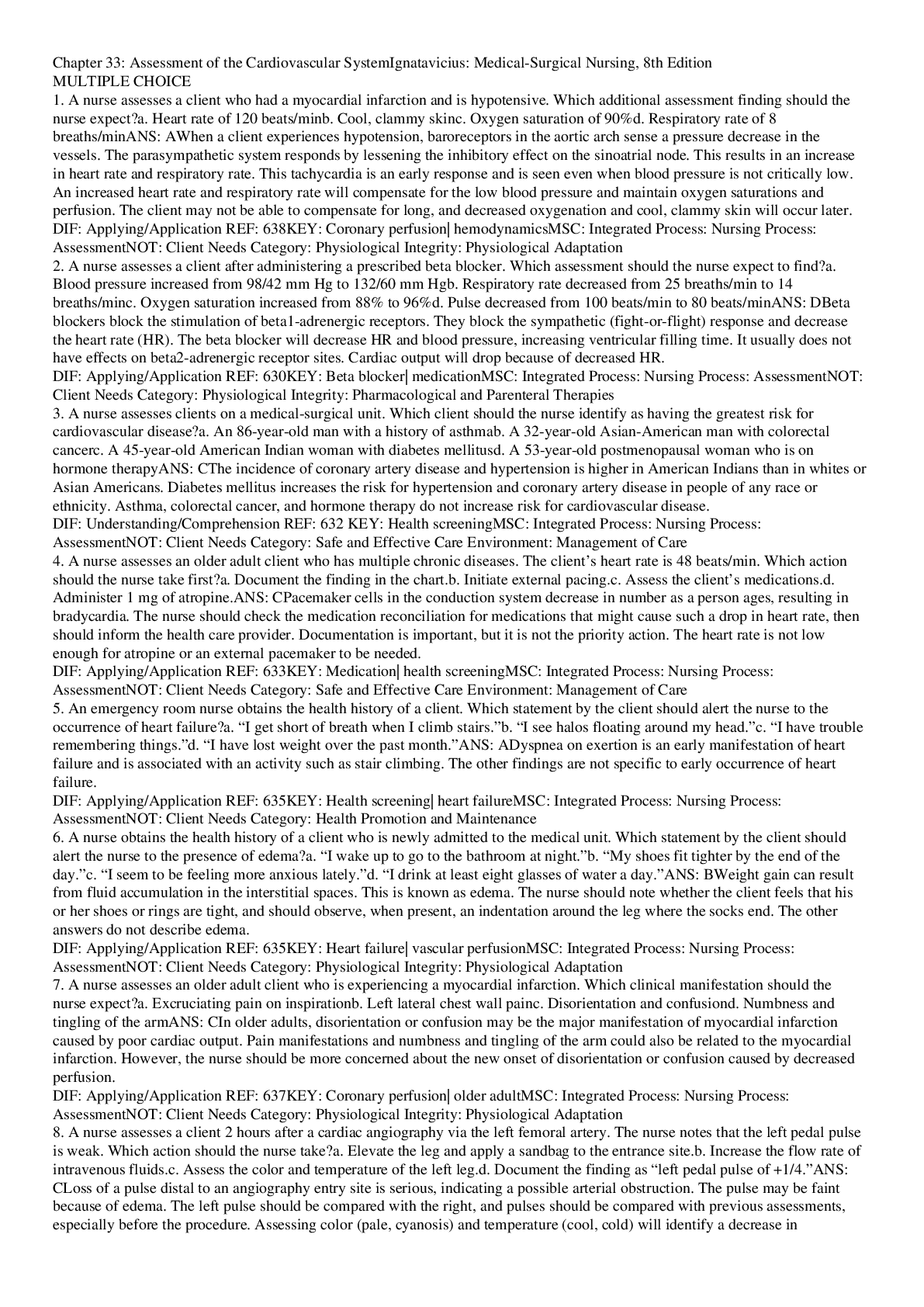
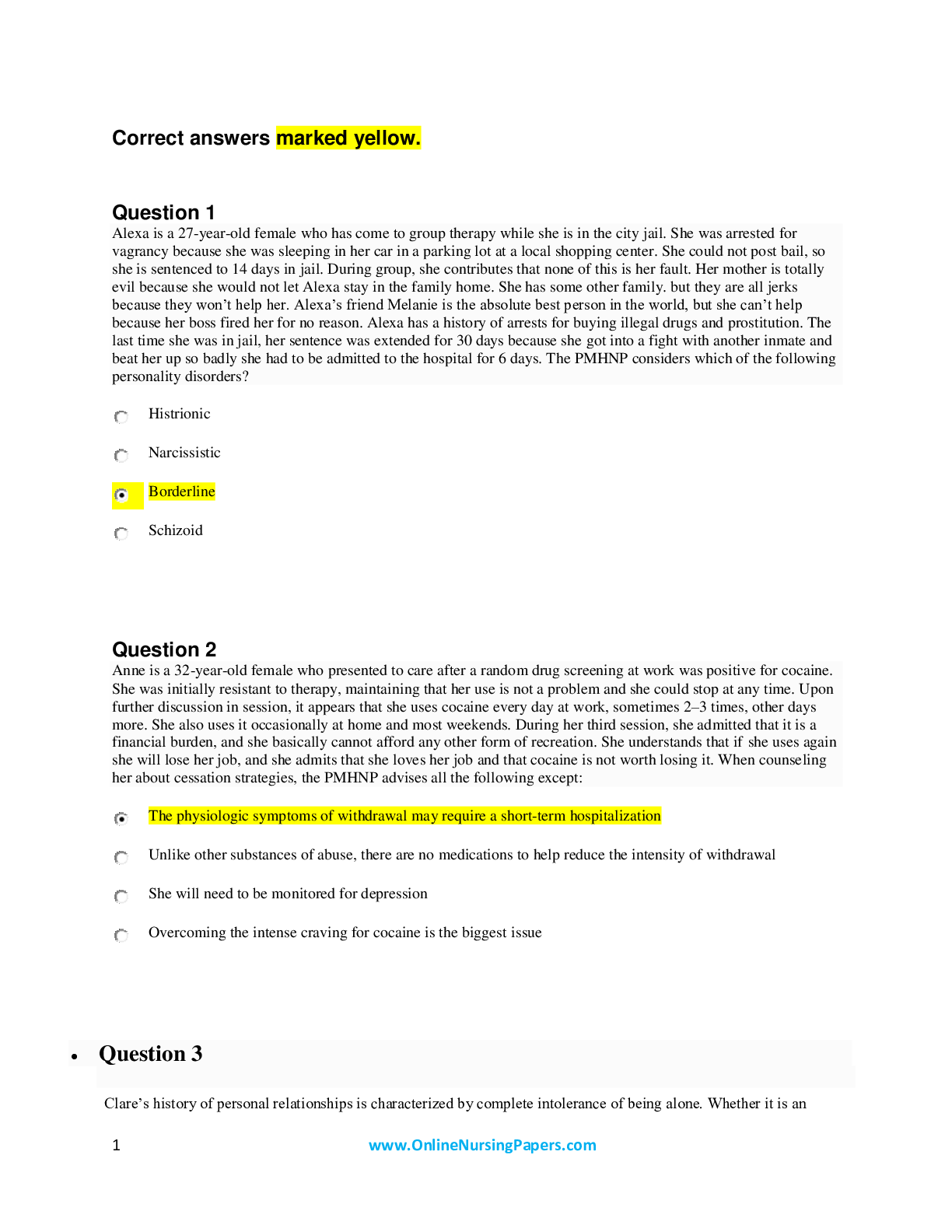

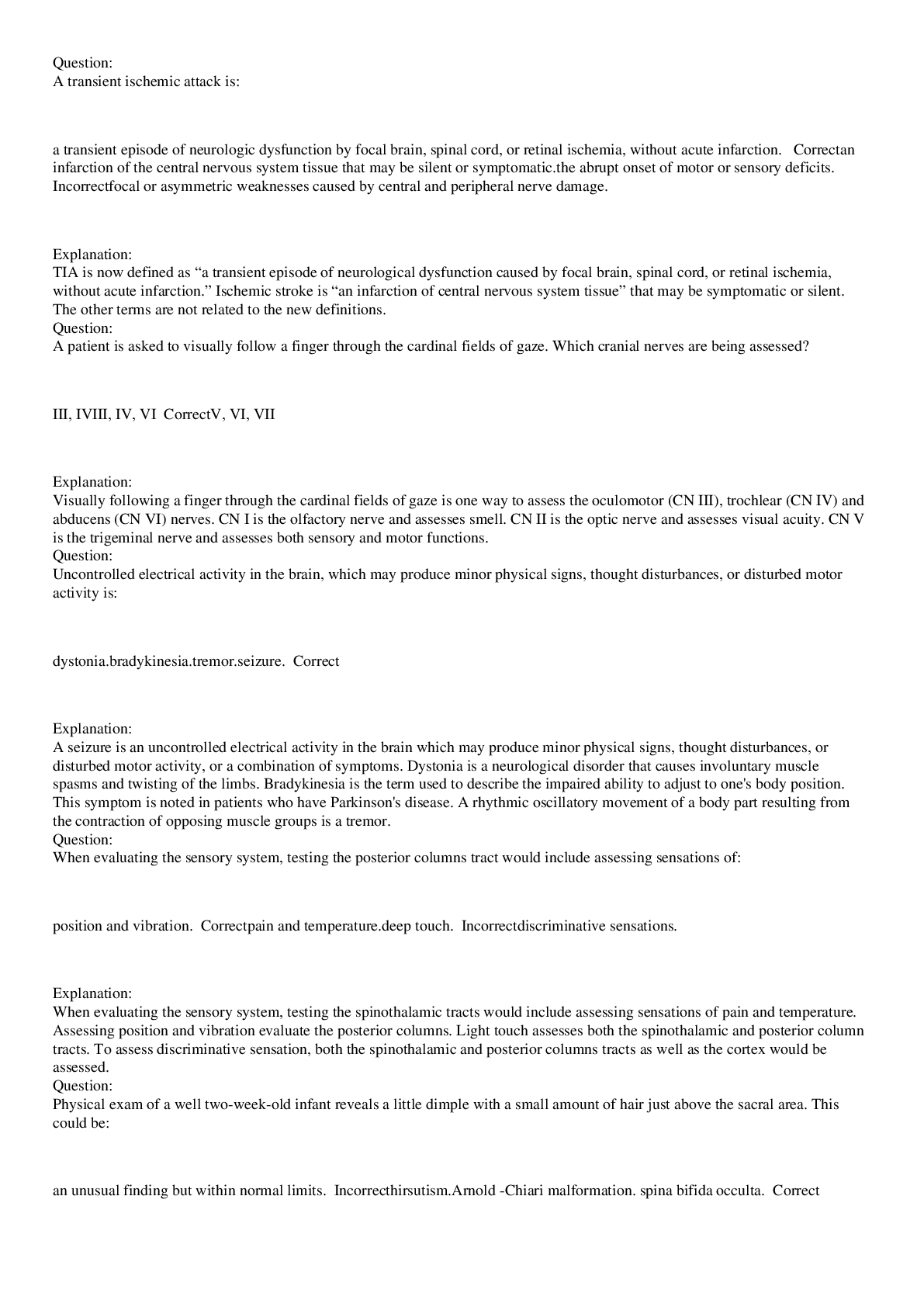







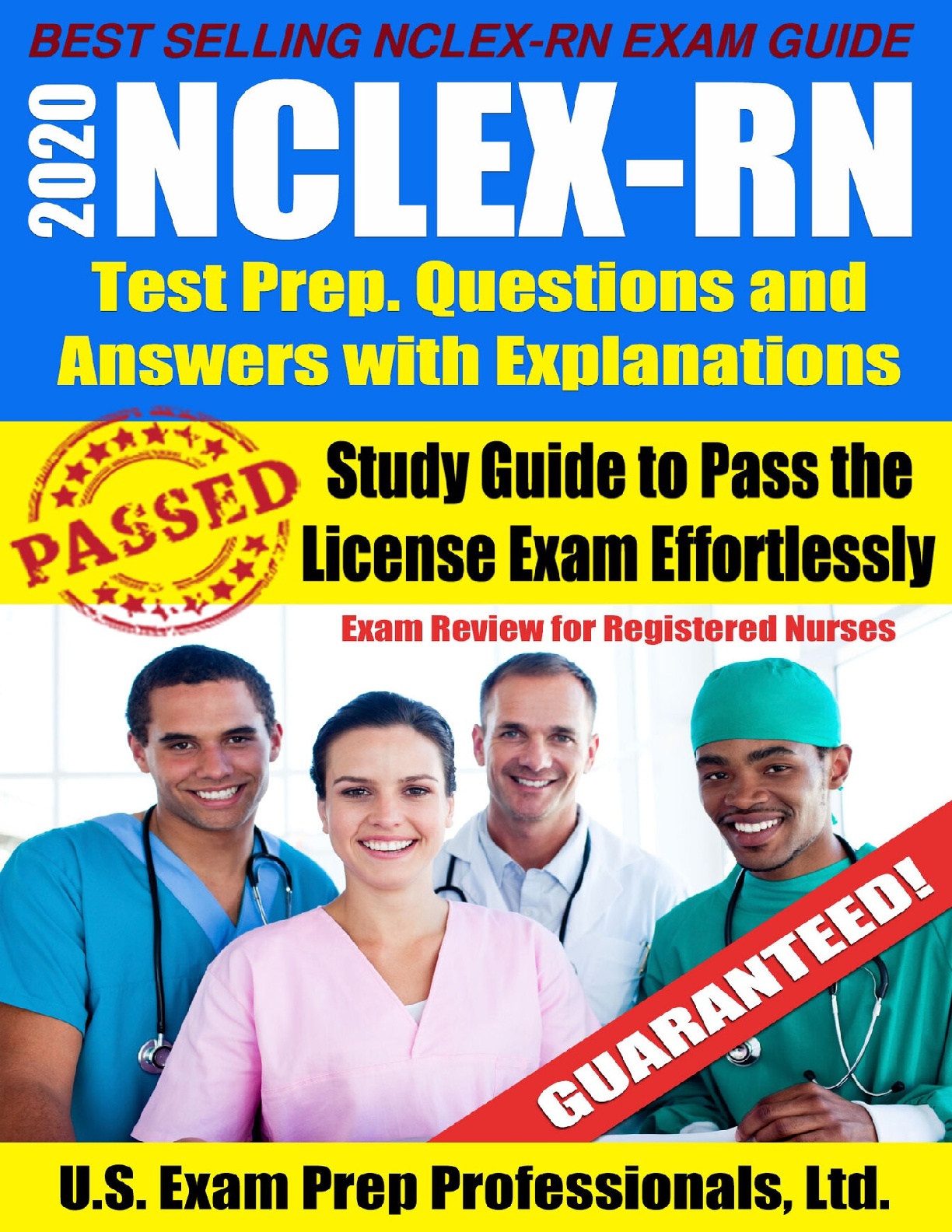

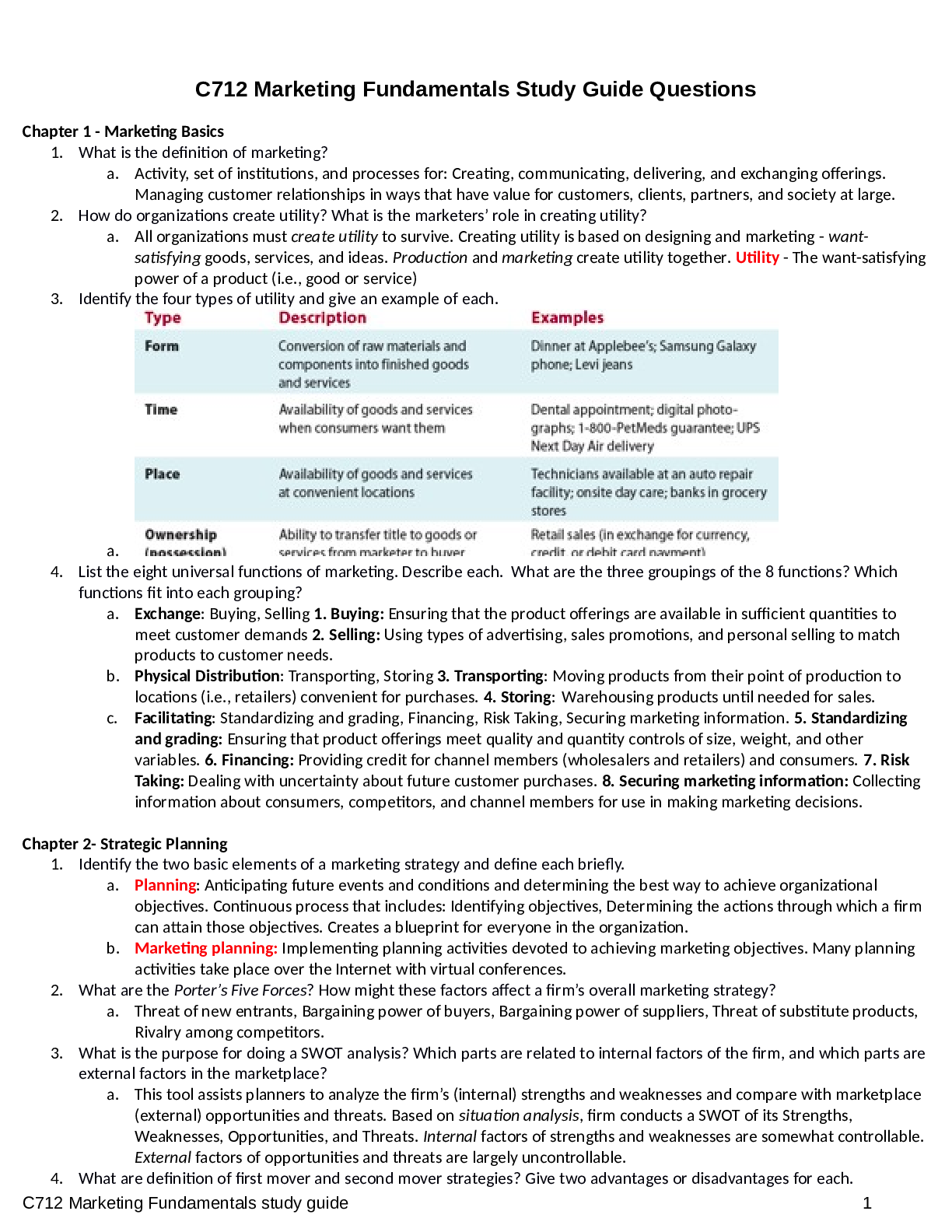
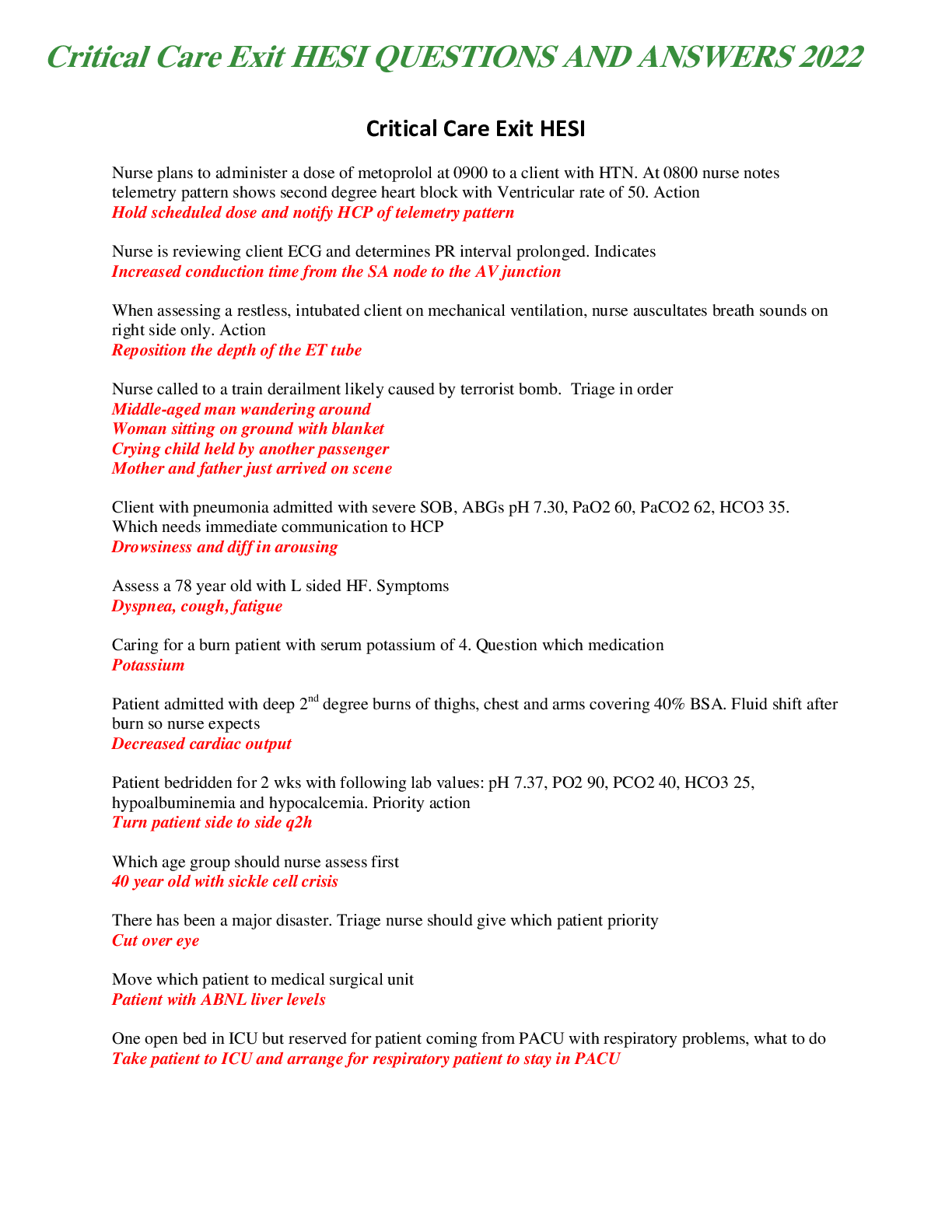

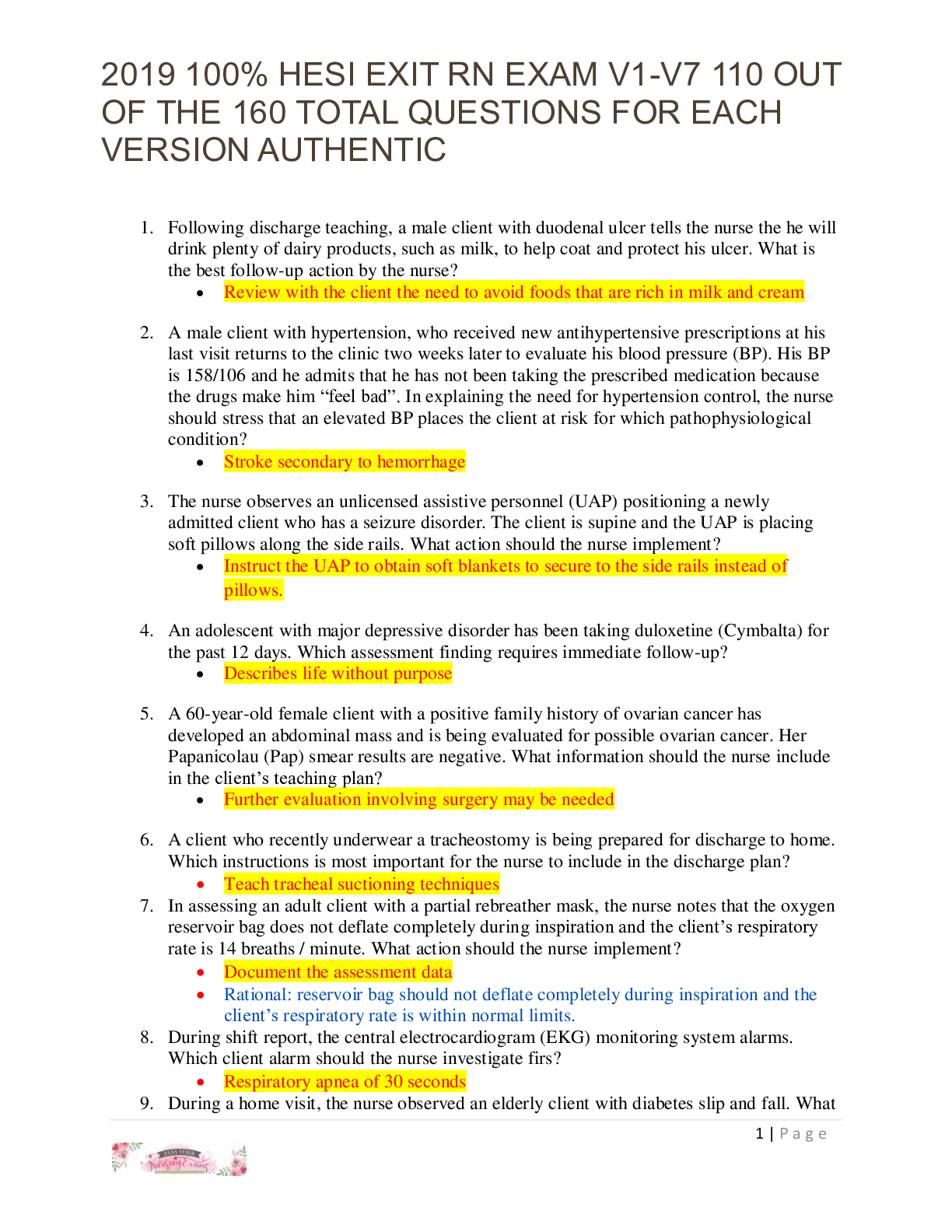

.png)
